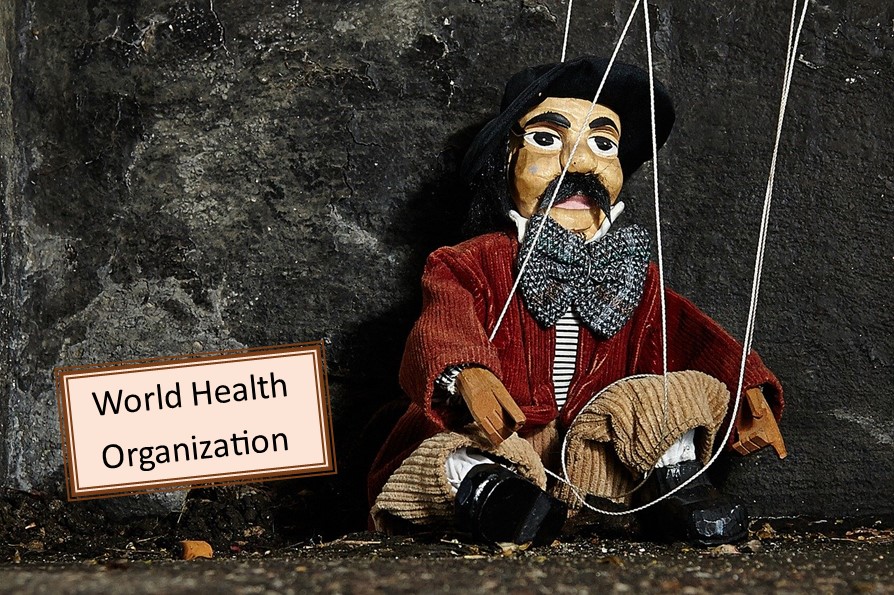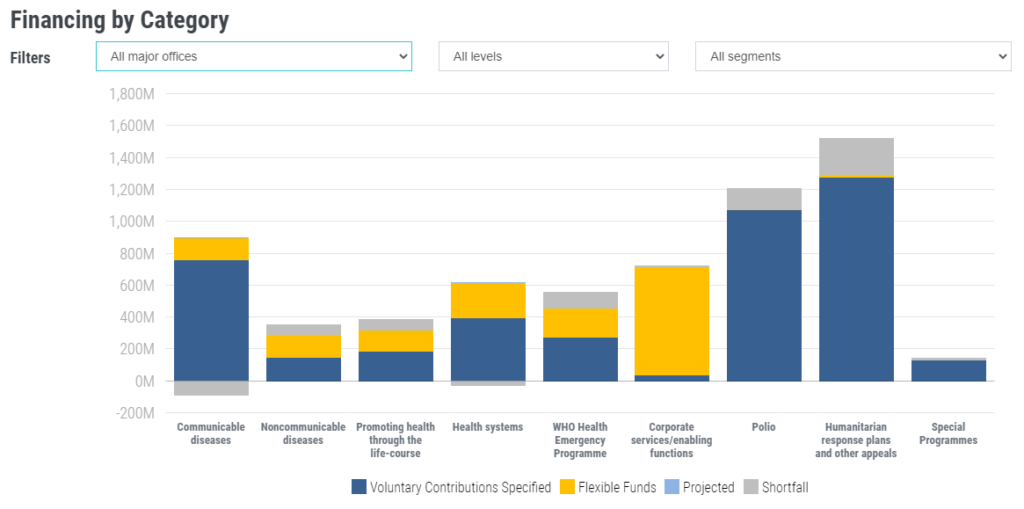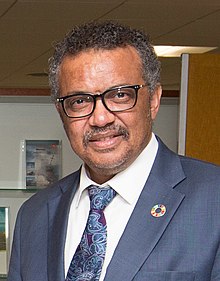
About the World Health Organization
The World Health Organization (WHO) was founded in 1948, as an agency of the United Nations and is comprised of member states around the globe. It replaced several regional health authorities that were established in Europe and the Americas in the early 1900s, to help stop the spread of disease.
The WHO’s mission is “the attainment by all peoples of the highest possible level of health”. According to its constitution, the WHO has as its directive “to act as the directing and coordinating authority on international health work.” The WHO establishes global standards and provides strong advice to member countries about public health measures. The WHO provides on the ground direction, advice, helps trace disease outbreaks, and provides other support as necessary. Its website includes guidelines, recommendations, lists of essential medications, and the like. Countries are not obligated to follow its guidelines.
Its member states form the World Health Assembly (WHA), which sets WHO policy, approves and supervises its budget, and elects the WHO director-general for five-year terms1.
Funding for the WHO comes from:
- Assessed and voluntary contributions from member states
- The United Nations
- Voluntary contributions from international organizations and private donors
How funding of the WHO compromises its mission
Since the 2008 financial crisis, most governments have become reluctant to pour their money into the agency. Member state’s dues account for less than one fourth of the agency’s budget with the balance coming from voluntary contributions by governments, foundations, and companies.

Unfortunately, the organization’s constitutional directive is actually subverted by the voluntary contributions it receives. Voluntary contributions, which amount to over 75% of the WHO’s budget, can be earmarked for particular purposes by the donor and, as such, are limited to specific programs or program areas. Former WHO Director-General Margaret Chan has said that such influence is the de facto determinant of priority setting of the WHO: … “(m)y budget [is] highly earmarked, so it is driven by what I call donor interests2.”
Whose interests determine priority setting at the WHO?
In 2019, the US, as its largest funder, had been providing the WHO with 15.18% of its budget (assessed and voluntary contributions)3, including being the single largest contributor of voluntary funds. Since the US stopped its funding in May 2020, and submitted a notice of withdrawal from the organization over it’s handling of the coronavirus pandemic4, the Bill and Melinda Gates Foundation (BMGF), formerly the second largest contributor, is now the largest single funder of the WHO.
The Gates Foundation and its predecessor, the William H. Gates Foundation, had donated $2.1 billion through more than 200 grants to the WHO from 1998 through 2014.5. In 2019, the WHO received approximately 12.12% of its budget from the BMGF and approximately 8.18% from the Global Alliance for Vaccines and Immunization (GAVI). The BMGF was one of the founders of GAVI, and is one of its major contributors. Another organization that provides funding to the WHO, Rotary International (3.32%)6, also receives millions of dollars from BMGF and is a partner with the BMGF on joint projects. Other organizations that receive funding from the BMGF and contribute to the WHO include the Global Fund which Gates helped found7 , Unitaid8, PATH, the UN Foundation9[/ref], and others.
This mean that the BMGF together with GAVI contributed a collective 20.3%, including Rotary, a collective 23.6%, and even more when you include all the other earmarked voluntary contributions from organizations with which the Gates Foundation shares its financial largess. In this way, Gates has acquired enormous control over the WHO’s priority setting, more than any other member state including the US while still a member.
About the Bill and Melinda Gates Foundation
The BMGF is the largest private foundation on Earth, with reported assets of over $51 billion at the end of 2019. The Foundation, as a major funder of institutions from US university departments to major international development NGOs, is the main player in several global health partnerships.
‘Through its funding it … operates through an interconnected network of organizations and individuals across academia and the NGO and business sectors. This allows it to leverage influence through a kind of “group-think” in international health.’
The enormous power he has gained through the BMGF’s out-sized donations and investments, and the public persona he has acquired for himself as an “expert” in the global health arena (as well as other areas such as climate change and education), has enabled him to become an unelected global czar, setting a world wide health agenda almost singlehandedly10.
In 2008 the WHO’s head of malaria research, Aarata Kochi, accused a Gates Foundation ‘cartel’ of suppressing diversity of scientific opinion, claiming the organization was ‘accountable to no-one other than itself’11. (In 2000, the year that the Gates Foundation was founded, Congress accused Bill Gates of monopolistic practices. He was charged with violating the Sherman Anti-trust act and was forced to change the way the company did business12. In 2004, he was charged with violating the antitrust waiting period for stock purchases and fined $800,00013.)
The Gates Foundation also controls public perception through its sponsoring of news programs such as NewsHour with Jim Lehrer, which received $3.5 million to set up a special unit to report on global health issues. About the potential conflict of interest in reporting on issues involving the BMGF, NewsHour communications chief Rob Flynn said, “In some regards I guess you might say that there are not a heck of a lot of things you could touch in global health these days that would not have some kind of Gates tentacle14.”
How Gates’s ties and priorities affect the WHO’s operations
WHO Director-General Tedros Adhanom Ghebreyesus and BMGF
The current World Health Organization Director-General is … not a medical doctor at all, but the controversial ex-Minister of Health of Ethiopia, who was accused of covering up three cholera outbreaks in the country during his tenure. Before joining the WHO, he served as chair of the Gates-founded Global Fund to Fight AIDS, Tuberculosis and Malaria, and sat on the board of the Gates-founded Gavi, the Vaccine Alliance, and the Gates-funded Stop TB Partnership15.
Bill and Melinda Gates Foundation priorities
‘[H]arness advances in science and technology to save lives in developing countries. We work with partners to deliver proven tools— including vaccines, drugs, and diagnostics—as well as discover pathbreaking new solutions that are affordable and reliable. Equally important is innovation in how we bring health interventions to those who need them most. We invest heavily in vaccines to prevent infectious diseases—including HIV, polio, and malaria—and support the development of integrated health solutions for family planning, nutrition, and maternal and child health.’
The Foundation considers vaccines as ‘catalytic’ interventions that can stimulate major progress in health.
…
”Vaccines save lives, which is reason enough to make sure they get out there. But that’s not their only benefit. Healthy children spend more time in school, and they learn better while they’re there. When health improves, poor countries can spend more on schools, roads, and other investments that drive growth, which makes them less dependent on aid. Vaccines deliver all this for, in some cases, just pennies per shot. That’s why I say that if you want to save and improve lives around the world, vaccines are a fantastic investment16.“
Bill Gates’s credentials
How did Bill Gates come to this position of power? He is not an epidemiologist, vaccinologist, virologist, economist, medical doctor, a certified specialist in any relevant field, or even a college graduate. He is, however, the second richest person in the world and was best been known as the founder and head of Microsoft until he moved into philanthropy. Gates is also the son of William H. Gates, Sr., a former head of Planned Parenthood17. One of the founders of Planned Parenthood, Margaret Sanger, was a eugenicist, with ties to the KKK and Nazis.18. Her views about birth control were in line with her views about eugenics: “More children from the fit; less from the unfit—that is the chief issue of birth control” 19. Bill Gates’s father was also associated with the Fabian Society20, another organization that endorsed eugenics21. This is why Gates is very outspoken about his perceived need for, and funding of, population control and population reduction through vaccines, family planning, and health care which “can lower the population by 10%- 15%”. 22, a number equivalent to 1 billion people.

Gates pushes vaccines in contradiction to WHO determinants of health
Gates insists that disease reduction can be obtained through vaccines without first eliminating its causes. In May 2005, Gates gave the keynote speech at the 58th World Health Assembly. To understand how he undermines the WHO
… it is essential to consider the nature of the BMGF‘s vaccine investments, as well as what is neglected by this approach, such as, most fundamentally, adequate living and working conditions. The BMGF‘s approach is … reductionist… Having a private sector orator address this annual gathering, at WHO, was unprecedented; his bravura in invoking the model of smallpox eradication based on vaccination (sidestepping its non-patented status) to set the course of WHO into the future was astounding: “―Some point to the better health in the developed world and say that we can only improve health when we eliminate poverty. And eliminating poverty is an important goal. But the world didn’t have to eliminate poverty in order to eliminate smallpox—and we don’t have to eliminate poverty before we reduce malaria. We do need to produce and deliver a vaccine (128)”.
Strikingly, Gates appealed to his audience with a deceptively simple technological solution to an enormously complex problem just two months after WHO launched its Commission on Social Determinants of Health, established precisely to counter overly biomedicalized understandings of health and to investigate and advocate for addressing the range of fundamental structural and political factors that influence health. Further, Gates‘s assertion directly contradicts an abundance of public health and demographic research that demonstrates that the modern mortality decline since the 19th century has been the consequence of, first, improved living and working conditions, followed by a combination of these socio-political approaches with medico-technologies that emerged since WWII (81,129-136)23.
According to the WHO [emphasis added]:
… Malnutrition is both a medical and a social disorder, often rooted in poverty. Combined with poverty, malnutrition contributes to a downward spiral that is fuelled by an increased burden of disease, stunted development and reduced ability to work.
…
Chronic food deficits affect about 792 million people in the world (FAO 2000), including 20% of the population in developing countries. Worldwide, malnutrition affects one in three people and each of its major forms dwarfs most other diseases globally (WHO, 2000). Malnutrition affects all age groups, but it is especially common among the poor and those with inadequate access to health education and to clean water and good sanitation. More than 70% of children with protein-energy malnutrition live in Asia, 26% live in Africa, and 4% in Latin America and the Caribbean (WHO 2000).
…
Interventions that contribute to preventing malnutrition include :
- Improved water supply, sanitation and hygiene.
- Health education for a healthy diet.
- Improved access, by the poor, to adequate amounts of healthy food.
- Ensuring that industrial and agricultural development do not result in increased malnutrition24.
Children who are malnourished are not healthy children, no matter how many vaccines they have. And, children who are malnourished cannot do well in school.
An important question
Will the World Health Organization ultimately be able to fulfill its mission of facilitating the “attainment by all peoples of the highest possible level of health” and is it the “directing and coordinating authority on international health work” it is meant to be, or has the agency essentially become a vehicle for the fulfillment of outside organizations’ self-interests, such as those of Bill Gates and the Bill and Melinda Gates Foundation, following their directions like a puppet on a string?
Footnotes



